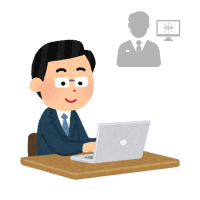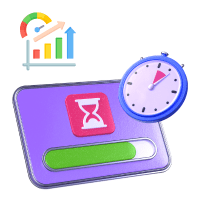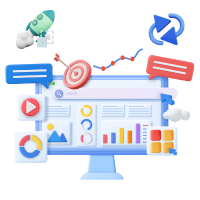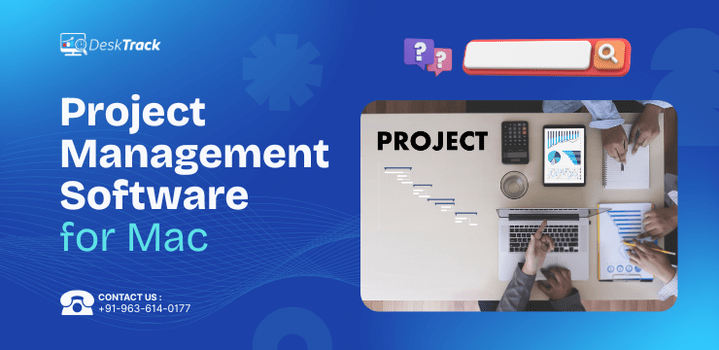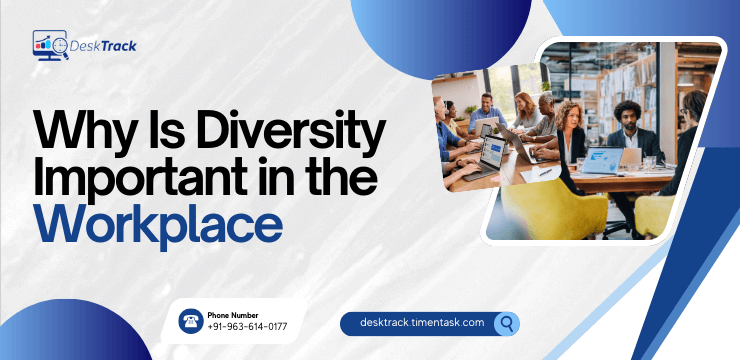Time tracking vs attendance management: which one should you choose? What’s more important for your business? Confusing. Isn’t it? Both time and attendance tracking are birds of the same feather. However, you still need to choose the right method according to your business to track employee time and/or clocking.
Managing employee attendance involves tracking leaves, presence, absence, time off requests, and related stuff. On the other hand, tracking employee time involves monitoring the work hours spent on things such as tasks, projects, and meetings. To summarize, tracking time on work. Overall, both are similar and yet different. Thus, today, we will help you choose the right method to log employee hours for you.
You see. When it comes to the debate on time tracking vs attendance management, you need to understand a lot of technicalities. These include an overview of both, the difference between the two, when to use which, and which one has the priority in the current year. So, that’s what we will discuss in this blog. With that out of our way, let’s get started.
Time Tracking vs Attendance Management: What is Time Tracking?
![]()
Now, let’s go into a little detail. Shall we? In short, hours tracking includes tracking more than just employee attendance. It includes tracking employee hours spent on various work tasks such as projects, meetings, total work hours, and system login/logout time (yes, this is also a task).
In a way, all this information is used to identify employee efficiency, work-time utilization, and productivity. In that context, a thing to note is that by tracking employee time, you can also track employee attendance by using the data as a measure.
However, the reverse is not possible. With that being said, let’s look at the various ways to track staff time.
1. Pen & Paper Timesheets
The first one in the first part of our time tracking vs attendance management is pen and paper timesheets, simply known as paper timesheets. To summarize, these are formatted paper sheets for recording the weekly work hours of employees. To start with, it is good if you only have a few employees and only work on simple projects. However, there are more cons of paper timesheets than pros.
- Every week, there is a new timesheet, which can get expensive and bulky.
- There is a sheet per week per employee. So, if you have large teams, then handling this much data with pen and paper is time-consuming and complex.
- It is prone to errors, and information can get cluttered. Making finding a specific sheet time-consuming. Especially when needed the most. Plus, it is also the main reason behind inaccurate payrolls and invoices.
- These documents can easily get stolen or lost, costing you valuable time and money.
- Employees can also cheat you by showing longer work hours.
2. Digital Timesheets
Next up, we have digital timesheets for time and attendance tracking. These upgraded versions of timesheets solve the problem of cluttered work hours data. Plus, if you put a passcode, then the data can’t get lost or stolen. However, it’s still complicated to calculate payroll and invoices as there is no automation or technological help.
3. Manual Methods
This is completely based on employee trust and is seriously guesswork. There are no pros to this, only cons. That’s because you have no choice but to believe what the employees tell you. So, if you are still living in the stone age, then feel free to use this method. Also, did we mention that it’s time-consuming?
4. Punch Cards
The next part in our time tracking vs attendance management blog is punch cards. Here’s how this works.
- The employee taps a punch card to a reader before starting work to indicate start time. It’s the same to indicate the task’s end time.
- The in-between hours is the total time taken to complete the task.
It’s slightly simple but still not foolproof. For example, an employee can stop working mid-task and then tap the card to indicate end time, which is still time theft.
5. Time Tracking Software (Recommended)
Time tracking software is the ultimate solution to all your work hours tracking issues. The tool provides you with many features and functionalities to accrue work hours monitoring, including:
- Automatic or automated hours tracking
- Automated or automatic online and digital timesheets
- A central dashboard with information search filters, which ensure easy data access.
- Hierarchical data access.
- Real-time analysis and reporting
- Security features to protect data from leaks and insider threats.
So, overall, there is no time theft or false time entries. Plus, you get useful real-time insights to improve work-time utilization efficiency without disrupting the workflow.
Read Also: Best 10 Time Tracking Software for IT Companies in 2025
Time Tracking vs Attendance Management: What is Attendance Management?
The next part of our attendance and time management discussion is attendance management. This is self-explanatory. Employee attendance tracking is all about managing employee presence, absence, leaves, breaks, time off requests, and related data.
All of this is directly related to employee work scheduling and resource management. There are many things you need to account for, such as:
- The number of time-off requests remaining per employee
- Who to schedule in place of an employee on emergency leave.
- Effective management in case of staff shortage.
This is still related to employee time. However, it is in days, months, and years. Overall, attendance management is best for enterprises that pay employees monthly salaries. Nonetheless, let’s revise the various ways to track attendance.
| 1. Pen and Paper Registers | Employees have to fill in their clocking times in hardbound registers. Like paper timesheets, this also has many disadvantages, such as cluttered data and the possibility of time theft. |
| 2. Punch Cards | These are cards staff members have to tap every time they clock in or clock out. According to business policies, employees may also have to clock in and out of breaks. This solves the issue of cluttered data. However, the issue of buddy punching still exists. |
| 3. Biometric Attendance Systems | Biometric attendance systems are the most accurate attendance-marking technologies. How they work is that the bio-footprint of the employees is stored and matched against when clocking. So, only in rare cases is the data inaccurate, which you can always double check. |
| 4. Attendance Management Software | Attendance management software provides everything you need to track and manage employee attendance. Plus, there are also additional features, such as automated scheduling and self-service portals with integrations, all in one compact solution. So far, it is the most easy-to-use and management simplification software. |
Time Tracking vs Attendance Management: The Importance
When talking about time tracking vs attendance management, we can’t ignore how important these are for organizations and businesses worldwide in general. All in all, there are 7 benefits of attendance management and time tracking for your business.
1. Timely Payments
Regardless of whichever is more important for you in time tracking vs attendance management, the first benefit you will get is timely salary payments. This leads to more employee satisfaction and work engagement, which earns you more efficiency, productivity, and profitability.
2. Enhances Employee Productivity
Time and attendance tracking helps you reduce absenteeism, time theft, buddy punching and other potential obstructions in your way of maximum productivity. This provides you with a higher employee accountability and productivity ratio.
3. Improves Project Management
When you track employee time accurately, then you will have a 360-degree view of the time employees dedicate to tasks and the time they waste or are idle. This data helps you look into any issues causing delays and make data-driven decisions for better project management.
4. Gain Insights into Employees
The next part of our time tracking vs attendance management debate is how the software solutions for the same help you gain insights into the work-time utilization efficiency of your employees via accurate analysis and reporting features. This results in continuous employee improvement.
5. Strengthens Labour Law Compliance
Attendance and time tracking also ensure strong labour law adherence. By keeping accurate records of employee hours, you pay them fairly, which not only makes auditing convenient but also ensures that you adhere to the strict labour laws and do not have to pay heavy fines, which could otherwise be up to $14-$40 million.
6. Enhanced Resource Management
Attendance management and time tracking, especially with dedicated software solutions, help businesses and organizations streamline resource management. That is human resource management. What we are talking about is ensuring that work goes on smoothly, even during sudden or unexpected situations.
7. Improved Employee Accountability
Tracking employee hours ensures improved employee accountability. This is because of the known fact that when employees know that they are being tracked, they are more on their toes.
Plus, any delays in timesheets let you question your staff: Where did the remaining time go? Now, let’s jump straight to the “time tracking vs attendance management: the difference” section.
Time Tracking vs Attendance Management: The Difference
As we mentioned before, both time tracking and attendance management are similar but different. So far, you have only known the similarities. However, what about the differences? We gathered useful information for you below.
| Time Tracking | Attendance Management | |
|
Tracks time spent on particular tasks, projects, activities | Monitoring employee presence, absence, breaks, work schedule adherence |
|
To provide businesses with a more accurate estimate of project expenses, resource allocation, and employee productivity | To ensure accurate payroll, employee time off management, and attendance pattern monitoring |
|
Useful for freelancers, project-based organizations, consultants, businesses which require insightful data on work-time | Businesses with hourly staff members, manufacturers, retailers, owners that require employee attendance and time off tracking |
|
Tracking hours spent on different projects, evaluating particular project task times, understanding where your typical workday went | Tracking employee clocking times, overtime management, time off request tracking |
Read Also: 10 Best iPad Task Management Apps for 2025
Time Tracking vs Attendance Management: When to Use What?
![]()
Another thing that led to the time tracking vs attendance management blog is people asking when to use what. Well, the answer depends on your requirements:
1. Remote Teams
When it comes to monitoring the hours of remote teams, the latter is recommended. That’s because remote teams and employees can be working from anywhere, so any type of clocking method won’t work here.
2. In-office Staff
Whether you should pick the former or latter from time tracking vs attendance management depends on how you pay your employees. For example, if you pay hourly wages or hire contract employees, then time tracking is a better option. However, if you have more salaried employees, then attendance management will do the trick.
3. Hybrid Employees
Hybrid employees and staff members are a mix of both remote and in-office settings. That is a flexible balance of both time tracking and attendance management. Fortunately, many software solutions like DeskTrack provide features of both attendance and work hours tracking at cost-effective prices.
4. Freelancers & Project-Based Teams
Freelancers and project-based teams and employees never work for fixed hours per day. So they will pick the first option. That is time tracking. Moreover, for project-based teams, we also recommend using project management software to boost efficiency.
5. Manufacturing & Retail
Manufacturing and retail businesses will again go for attendance management in the time tracking vs attendance management debate. This is because these professionals work for set hours per day. However, in rare cases, they will track time as well. For instance, if a retail shop owner has hired labours temporarily.
Time Tracking vs Attendance Management: What’s More Important in 2025?
If you were to choose which is better in 2025 between time and attendance tracking, then several factors come into play:
|
Some experts even say that attendance tracking is a subset of time tracking. Technically, they are right. However, as per our experience, both are different things related to staff hours. |
|
Another aspect to look at is sector-specific needs. Some industries prefer time tracking, while others go for the management of employee attendance. |
How DeskTrack Combines Time Tracking & Attendance Management?
DeskTrack is primarily an employee time tracking software, which also integrates the most intuitive attendance monitoring features. To summarize, it balances both while also providing you with excellent employee monitoring software features. Here’s how it works.
- As soon as your employee clocks in, DeskTrack fetches attendance data from your attendance system. The same is true during clock-out.
- DeskTrack also helps streamline leave management, time off request tracking and other related processes with automation and real-time reporting.
- The software also tracks employee hours and categorizes them into various labels based on your configurations.
- It also provides your employees with accurate and flexible task timers and manual time entry options, ensuring that not even a single second of work is unrecorded.
Conclusion
Now, we hope that you have wrapped your head around time tracking vs attendance management. What’s more important. As a final word, we can say that it depends on industry and business requirements. However, a better solution is to use a hybrid of both, which saves businesses valuable time, which they would use to research the best software for employee hours according to their needs. Speaking of the best, we recommend using DeskTrack, which is the most cost-effective time tracking, productivity monitoring, project management, employee activity and attendance management software solution for your in-office, field, remote, and hybrid teams and employees.
Frequently Asked Questions (FAQ)
Q. Can You Use Both Time & Attendance Tracking Software?
Ans. Yes, there are no strict protocols regarding this choice. So, based on your preferences, you can implement.
- Time tracking software
- Attendance management software
- Both attendance tracking and time management software
Q. Is Time Tracking Invasive?
Ans. It depends on how you use the tools for it. For instance, if you track outside office hours or use the software to micromanage, then it is not ethical and is also illegal.
Q. How Can You Convince Your Staff to Adapt Time Tracking & Attendance Management Software?
Ans. By telling them about its benefits for them, which include:
- Timely Payments
- Enhances Employee Productivity
- Improves Project Management
Q. How Does DeskTrack Combine Time Tracking & Attendance Management?
Ans. DeskTrack is primarily an employee time tracking software, which also integrates the most intuitive attendance monitoring features. To summarize, it balances both while also providing you with excellent employee monitoring software features. Here’s how it works.
- As soon as your employee clocks in, DeskTrack fetches attendance data from your attendance system. The same is true during clock-out.
- DeskTrack also helps streamline leave management, time off request tracking and other related processes with automation and real-time reporting.
- The software also tracks employee hours and categorizes them into various labels based on your configurations.
- It also provides your employees with accurate and flexible task timers and manual time entry options, ensuring that not even a single second of work is unrecorded.



